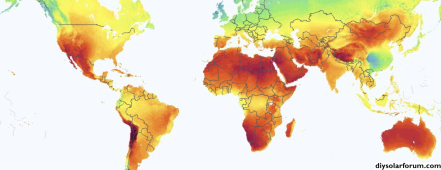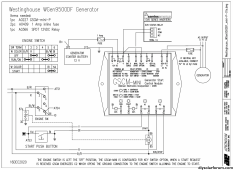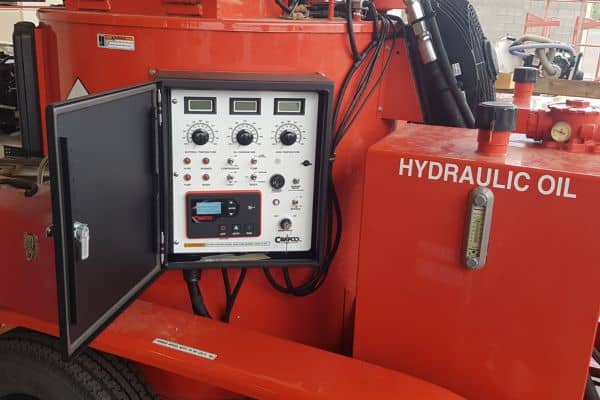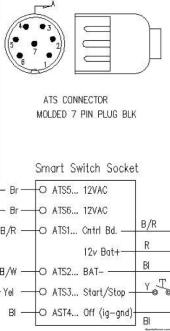AGS - Auto Generator Start Information Thread
The intent of this thread is to collect and share information to improve understanding of AGS systems, capabilities and limitations. This post will provide a starting point with the hope that others add, improve and correct any posted information. Hopefully this will help fill a need for accurate and helpful information on AGS.
Generators - meh
Fuel powered generators are seen by many to be everything from gross to just plain unnecessary. This is demonstrated by the relatively low traffic in the Fuel Backup Generator forum and also by Will’s hilarious (as in very fun to watch) disdain of a gas generator (see 02:54) when he had to buy one in order to test a battery charger. However, for some of us generators are part of our system and AGS vastly simplifies their use.
AGS: What is it?
AGS (Auto Generator Start) is a useful feature that provides the benefit of starting and stopping a generator automatically based on any number of conditions such as battery voltage, battery SOC, current draw, ambient temp, generator exercise, low oil level, over/under rpm, etc.
AGS: Why is it needed?
https://globalsolaratlas.info/map

AGS: Basic System Requirements
Example: AGS In Action
Components: Victron Cerbo GX (system aggregator) | Atkinson GSCM-P (AGS module) | Westinghouse Wgen7500DF (generator)

The intent of this thread is to collect and share information to improve understanding of AGS systems, capabilities and limitations. This post will provide a starting point with the hope that others add, improve and correct any posted information. Hopefully this will help fill a need for accurate and helpful information on AGS.
Generators - meh
Fuel powered generators are seen by many to be everything from gross to just plain unnecessary. This is demonstrated by the relatively low traffic in the Fuel Backup Generator forum and also by Will’s hilarious (as in very fun to watch) disdain of a gas generator (see 02:54) when he had to buy one in order to test a battery charger. However, for some of us generators are part of our system and AGS vastly simplifies their use.
AGS: What is it?
AGS (Auto Generator Start) is a useful feature that provides the benefit of starting and stopping a generator automatically based on any number of conditions such as battery voltage, battery SOC, current draw, ambient temp, generator exercise, low oil level, over/under rpm, etc.
AGS: Why is it needed?
- For many (most?) folks here AGS isn’t needed. It seems the majority of solar systems are grid-tied and are being built with plenty of solar and battery capacity to run several days w/out grid support. Also, many off-grid folks are located in places where solar irradiance is consistent enough to minimize or eliminate the need for a backup generator. Running a generator for these folks will be infrequent enough that the AGS is not a big benefit.
- AGS is needed or helpful where a generator is often required to keep the batteries charged when solar yield isn’t adequate. Factors here can be: older solar systems where panels were undersized due to cost; locations with inconsistent or reduced solar irradiance; systems where humans won’t be available to manually start the generator, etc.
https://globalsolaratlas.info/map

AGS: Basic System Requirements
- Generator:
- Gasoline or propane generator with electric start and auto choke (the auto choke can be DIY to adapt a non-auto choke generator to AGS)
- Diesel generator with relays to warm the glow plugs/intake air heater, run the fuel pump, etc. (this will be triggered in the correct sequence by the AGS)
- AGS Trigger: A configurable component that allows the user to set conditions when the generator will start and stop. Components that sometimes have configurable AGS triggers include:
- Inverter/charger
- System aggregator like a Victron Cerbo or Outback Mate, etc.
- Battery monitor
- Sometimes the AGS module itself
- AGS Trigger Types: Typically the AGS trigger is a simple dry-contact that opens or closes a circuit. That's it! All that expensive inverter/charger, etc. does is close or open a switch to trigger the AGS module. Other triggers include a 12 volt signal, e.g. Outback inverters. The AGS module will take the signal from the open or closed circuit (or the 12v signal) to begin a sequence of events that starts or stops the generator. This is where the magic starts to happen.
- AGS module: The AGS module takes the simple signal from the AGS Trigger to replicate the steps typically initiated by a human to start or stop the generator. With the exception of standby generators, many (most?) generators sold in the US do not come with an AGS module. I’ve seen some generators advertised in AUS with AGS preinstalled and some as options in the US but for the most part assume this is an added part to the system. They coast roughly $250 - $500 USD with opportunities to spend more.
- DIY AGS 'module': Assorted relays, timed relays, etc. can be combined to create a DIY AGS system at a lower cost than products available on the market. I hope to include links to well documented solutions in one of the posts below.
Example: AGS In Action
Components: Victron Cerbo GX (system aggregator) | Atkinson GSCM-P (AGS module) | Westinghouse Wgen7500DF (generator)
- The Cerbo allows the user to set a number of start/stop conditions such as SOC, batt voltage, battery current, inverter temp, generator exercise, etc.
- When a start condition is met the Cerbo closes a dry contact that activates the Atkinson AGS (Atkinson calls it a GSCM – generator start control module). The Atkinson AGS is programmed and wired to: a) close the on/off switch on the generator (this turns the generator on), wait a few seconds and then b) close the start/stop switch on the generator which starts the generator.
- If the Atkinson AGS senses an AC signal from the generator it will do nothing until the Cerbo opens the dry contact at which point it will close the start/stop switch (turn the generator motor off) and open the on/off switch on the generator (turn the generator off) and then go into standby mode.
- If the Atkinson AGS does not sense AC coming from the generator it will assume the generator is not running and will attempt three start sequences. (The Atkinson decision matrix and sequences are explained in great detail in the manual.)
- An approximate wiring diagram is shown below.

Last edited:







